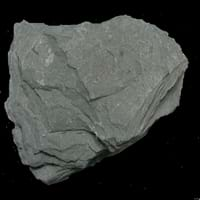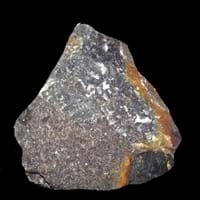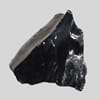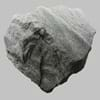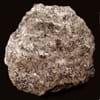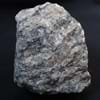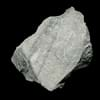Definition
Slate is a fine-grained, foliated, homogeneous metamorphic rock derived from an original shale-type sedimentary rock composed of clay or volcanic ash through low-grade regional metamorphism
Dolomite is a sedimentary rock containing more than 50 percent of the mineral dolomite by weight
Origin
England
Southern Alps, France
Discoverer
Unknown
Dolomieu
Etymology
From Old French esclate, from esclat (French éclat)
From French, from the name of Dolomieu (1750–1801), the French geologist who discovered the rock
Class
Metamorphic Rocks
Sedimentary Rocks
Sub-Class
Durable Rock, Medium Hardness Rock
Durable Rock, Medium Hardness Rock
Group
Not Applicable
Not Applicable
Other Categories
Fine Grained Rock, Opaque Rock
Coarse Grained Rock, Fine Grained Rock, Medium Grained Rock, Opaque Rock
Color
Black, Brown, Buff, Green, Light to Dark Grey, Purple, Red, Shades of Blue
Black, Brown, Colourless, Green, Grey, Pink, White
Durability
Durable
Durable
Scratch Resistant
Yes
Yes
Appearance
Dull
Glassy or Pearly
Interior Uses
Bathrooms, Decorative Aggregates, Entryways, Floor Tiles, Flooring, Homes, Hotels, Interior Decoration, Kitchens, Stair Treads
Decorative Aggregates, Homes, Interior Decoration
Exterior Uses
As Building Stone, As Facing Stone, Garden Decoration, Paving Stone
Garden Decoration, Office Buildings
Other Architectural Uses
Curbing
Not Yet Used
Construction Industry
As Dimension Stone
As a Flux in the Production of Steel and Pig Iron, As a Sintering Agent in Steel Industry to process Iron Ore, As Dimension Stone, Cement Manufacture, for Road Aggregate, Making natural cement, Manufacture of Magnesium and Dolomite Refractories, Production of Glass and Ceramics, Serves as an Oil and Gas Reservoir rock
Medical Industry
Not Yet Used
Taken as a Supplement for Calcium or Magnesium
Antiquity Uses
Artifacts, Monuments, Sculpture, Small Figurines
Artifacts, Jewellery, Monuments, Sculpture, Small Figurines
Commercial Uses
Blackboards, Commemorative Tablets, Laboratory bench tops, Standard material for the bed of Billiard table, Standard material for the beds of Pool and Snooker table, Tombstones, Used in aquariums, Writing Slates
An Oil and Gas Reservoir, As a Feed Additive for Livestock, Gemstone, Metallurgical Flux, Production of Lime, Soil Conditioner, Source of Magnesia (MgO)
Types
Not Available
Boninite and Jasperoid
Features
Easily splits into thin plates, Surfaces are often shiny, Very fine grained rock
Host Rock for Lead, Traps for subsurface fluids like Oil and Natural Gas., Zinc and Copper Deposits
Archaeological Significance
Famous Monuments
Data Not Available
Data Not Available
Famous Sculptures
Data Not Available
Data Not Available
Formation
Slate is a low grade metamorphic rock that is generally formed by metamorphosis of mudstone or shale, under relatively low pressure and temperature conditions.
Dolomite rocks are originally deposited as calcite or aragonite rich limestone, but during diagenesis process, the calcite or aragonite is transformed into dolomite.
Mineral Content
Apatite, Biotite, Chlorite, Feldspar, Graphite, Hematite, Kaolinite, Magnetite, Pyrite, Tourmaline, Zircon
Clay Minerals, Pyrite, Quartz, Sulfides
Compound Content
Aluminium Oxide, CaO, Iron(III) Oxide, Potassium Oxide, MgO, Sodium Oxide, Silicon Dioxide, Titanium Dioxide
NaCl, CaO, Carbon Dioxide, Magnesium Carbonate, MgO
Types of Metamorphism
Burial Metamorphism, Cataclastic Metamorphism, Regional Metamorphism
Burial Metamorphism, Cataclastic Metamorphism, Contact Metamorphism
Types of Weathering
Biological Weathering, Chemical Weathering, Mechanical Weathering
Not Applicable
Types of Erosion
Coastal Erosion, Glacier Erosion, Water Erosion, Wind Erosion
Not Applicable
Grain Size
Very fine-grained
Medium to Fine Coarse Grained
Fracture
Splintery
Conchoidal
Streak
Light to dark brown
White
Porosity
Less Porous
Less Porous
Luster
Dull
Vitreous and Pearly
Specific Gravity
2.65-2.8
2.8-3
Transparency
Opaque
Transparent to Translucent
Density
2.6-2.8 g/cm3
2.8-2.9 g/cm3
Resistance
Heat Resistant, Impact Resistant, Pressure Resistant, Wear Resistant
Heat Resistant, Pressure Resistant, Wear Resistant
Deposits in Eastern Continents
Asia
China, India, Turkey
China, India
Africa
Not Yet Found
Morocco, Namibia
Europe
Belgium, France, Germany, Italy, Norway, Portugal, Spain, United Kingdom
Austria, Italy, Romania, Spain, Switzerland
Others
Arctic
Not Yet Found
Deposits in Western Continents
North America
USA
Mexico, USA
South America
Brazil
Brazil, Colombia
Deposits in Oceania Continent
Australia
Not Yet Found
New South Wales, Queensland, Yorke Peninsula
All about Slate and Dolomite Properties
Know all about Slate and Dolomite properties here. All properties of rocks are important as they define the type of rock and its application. Slate belongs to Metamorphic Rocks while Dolomite belongs to Sedimentary Rocks.Texture of Slate is Foliated whereas that of Dolomite is Earthy. Slate appears Dull and Dolomite appears Glassy or Pearly. The luster of Slate is dull while that of Dolomite is vitreous and pearly. Slate is available in black, brown, buff, green, light to dark grey, purple, red, shades of blue colors whereas Dolomite is available in black, brown, colourless, green, grey, pink, white colors. The commercial uses of Slate are blackboards, commemorative tablets, laboratory bench tops, standard material for the bed of billiard table, standard material for the beds of pool and snooker table, tombstones, used in aquariums, writing slates and that of Dolomite are an oil and gas reservoir, as a feed additive for livestock, gemstone, metallurgical flux, production of lime, soil conditioner, source of magnesia (mgo).
